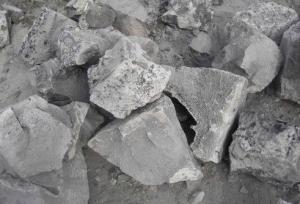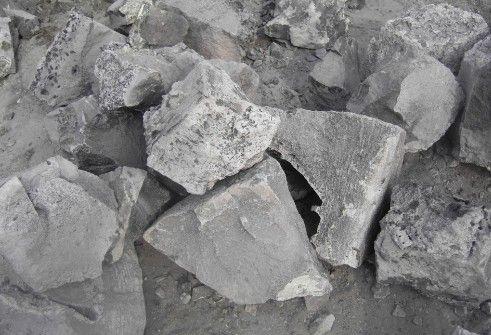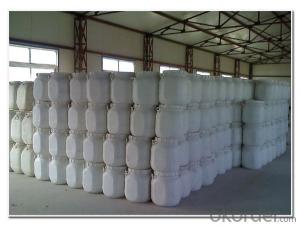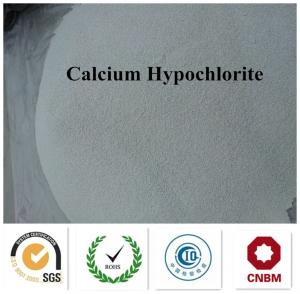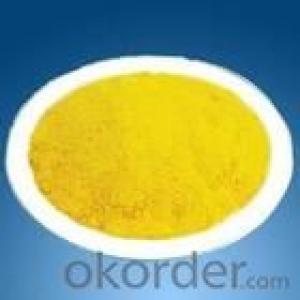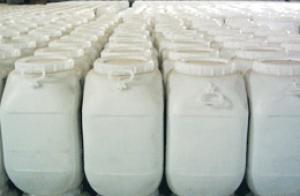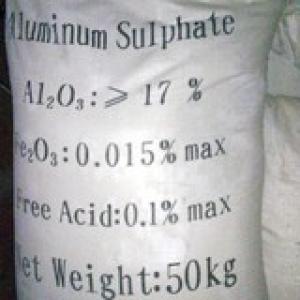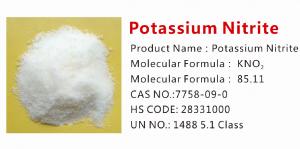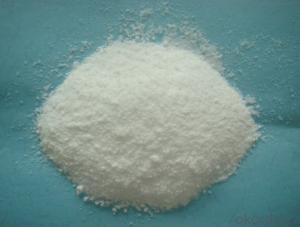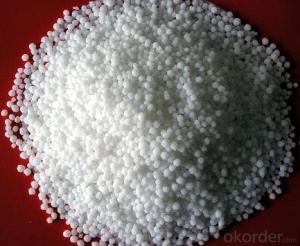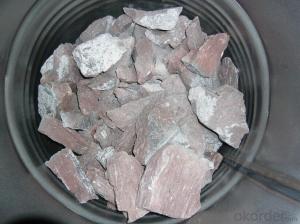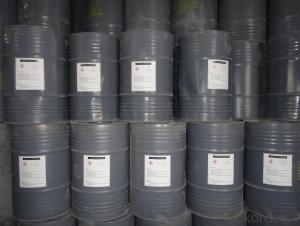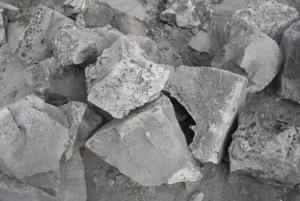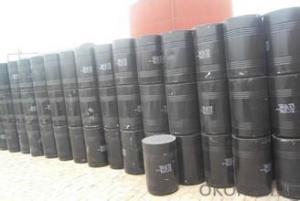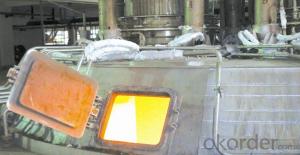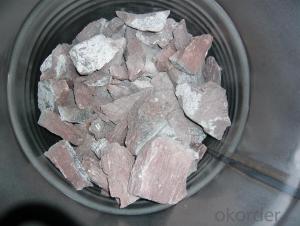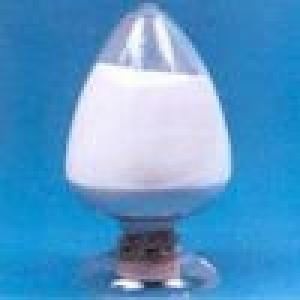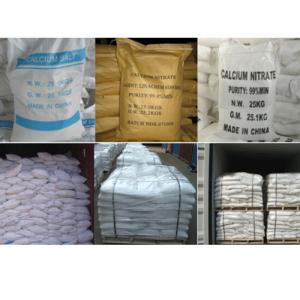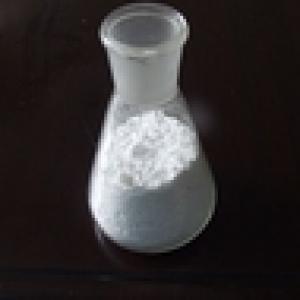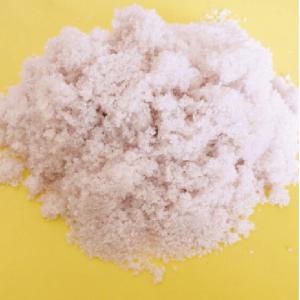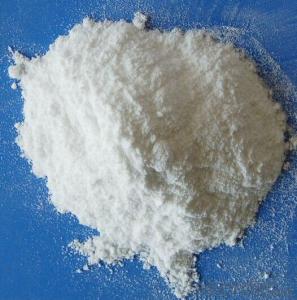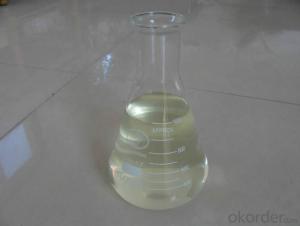Calcium Carbide with good quality and lower price
- Loading Port:
- Tianjin
- Payment Terms:
- TT OR LC
- Min Order Qty:
- 22.5
- Supply Capability:
- 1000 m.t./month
OKorder Service Pledge
OKorder Financial Service
You Might Also Like
This product is lumpy substance, its surface is a little deep gray, has slight nasty smell. It can produce acetylene gas when met water, it can burn when meets fire. The acetylene gas mix with air will form explosive gas (explosive range of acetylene gas in the air is 2.3% - 81%).
Technical specifications and features
1. Name
Calcium Carbide
2. Molecular formula
CaC2
3. UN
1402
4. Class
4.3
5. HS code
28491000
6. Gas yield20 101.3 Kpa
≥295L/KG
7. PH3(V/V)
≤0.08%
8. H2S(V/V)
≤0.1%
9.Molecular weight
64.10
(according to 1995 international relative atomic mass)
10. SIZE
4-7,7-15,15-25,25-50,50-80,80-120MM
11. Packing
50kg or 100kg iron drum
Cautions during transportion:
The packing must be kept in good condition and the goods should be stored in a dry,cool and ventilated place.It should be separate from the cargo can burn and acid.It should avoid meeting water and moisture.It should give off the acetylene in iron drum before storing in warehouse. Rolling drums,heavy putting down and colliding are not allowed to avoid the spark leads to explosion.
- Q: Several kinds of inorganic salt food sources?
- Phosphorus-rich foods: fish, lean meat, untreated cereals, eggs, dried fruits, all kinds of seeds, etc. Almost all natural foods
- Q: Nutritional characteristics of carbohydrates and inorganic salts in vegetables
- Vitamins: Fresh vegetables and fruits are an important source of ascorbic acid, carotene, riboflavin and folic acid
- Q: Please help i need the answer for a classwork assignment due today. I've looked everywhere online but i cant find the answer.
- the web page (below) discusses: Basal Salt Mixtures The use of balanced salt solution (BSS) in cell and tissue culture is generally attributed to early workers in the field. In 1885, Sydney Ringer developed a solution of inorganic salts designed to maintain contractility of mammalian heart tissue. A less specific salt solution was designed by Tyrode for use in work with primary mammalian cells. Tyrode's salt solution became the accepted fluid for diluting protein components of media of natural origin. Since that time, many other balanced salt solutions have been developed for use in cell and tissue culture. The current role of balanced salt solution in cell culture is multi-faceted and can be divided into four principle functions. see web page for extensive discussion on the good things about it
- Q: Do inorganic mercury salts bioaccumulate?
- Yes they do bioaccumulate. Mercury builds up for years and years, and eventually sits in a residue of pure mercury. - JJ
- Q: What are the effects of inorganic salts on plant growth?
- In addition to these three types of inorganic salts, plants also require many types of inorganic salts. Among them, the demand for some inorganic salts is very small, but they are in the life of the plant also plays a very important role. For example, the lack of inorganic salts containing Fe, fruit trees will be yellow leaf disease; lack of inorganic salts containing B, rape will be "flowers and not real" (only flowering fruit).
- Q: In order to prove that magnesium is an essential salt for soybean life, two soybean seedlings with the same growth status are taken, one of them is cultured in magnesium-containing culture medium and the other is cultured in (). A. Pure water B. Sand without sand. Water containing only magnesium. Media containing no magnesium
- Biological control experiments were the only variable experiments. The question that is being explored is the variable, and the other quantities are the same. In a different amount (conditions) the same circumstances to modify a data variable in order to get the data variables on the experimental changes in the law. In order to prove that magnesium is essential for the life of soybeans, the variable is the presence or absence of magnesium. Can be designed as a magnesium-containing culture medium and magnesium-free culture medium. The other amount of the same as the amount of culture medium, soybean seedling growth status, the same number, while placed in the same place, etc., to ensure that only one variable that is the presence of magnesium.
- Q: Why are inorganic sodium salts much better soluble in ethanol than potassium salts?
- Sodium ions are smaller cations than potassium ions. Ethanol has a polar bond in the OH, but it also has a nonpolar tail, the ethyl group. So, unlike water, that has two OH groups that are polar and can interact with cations, ethanol has only one, so it requires strong electrostatic attractions to form a hydrogen bond - dipole interaction with any cation that it encounters. Being smaller, the sodium ions have their positive charge concentrated over a much smaller volume, so the polar OH bond in ethanol is more strongly attracted to the concentrated charge of the sodium than to the diffuse charge of the potassium ion, making the salt more soluble in this solvent.
- Q: A. food gathering and digestion B. photosynthesis and diatom structures C. reproduction and osmosis D. wave and current motions
- its not a so try b or c those 2 are the most likely to be the right answers
- Q: Is the inorganic salt the same as the saline?
- Inorganic salts are inorganic compounds in the tears, originally called minerals. A large number of elements are calcium Ca, phosphorus P, potassium Ka, sulfur S, sodium Na, chlorine Cl, magnesium Mg, trace elements iron, zinc, selenium, molybdenum, fluorine , Chromium, cobalt, iodine and the like.
- Q: as a example potesium,sodium,magnees,calcium
- The sodium-potassium pump is most important in controlling the working of neurotransmitters. Calcium ion is also generated in voltage gated Ca++ channel, and Magnesium is necessary for metabolic functions. But Sodium is one of the most important inorganic component in our body. Of course Potassium is also as important. But, if you have ever seen the back of all food products there is a special part showing amount of Sodium in it...even Snacks.. :)
Send your message to us
Calcium Carbide with good quality and lower price
- Loading Port:
- Tianjin
- Payment Terms:
- TT OR LC
- Min Order Qty:
- 22.5
- Supply Capability:
- 1000 m.t./month
OKorder Service Pledge
OKorder Financial Service
Similar products
Hot products
Hot Searches
